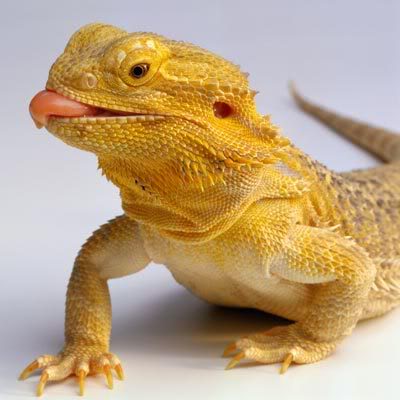Bearded Dragon and Setup for Sale: A Beginner's Guide to Owning This Amazing Reptile
Bearded Dragon and Setup for Sale: Everything You Need to Know Before Adding a Bearded Dragon to Your Family

Are you interested in owning a bearded dragon as a pet? These amazing reptiles are becoming increasingly popular among pet owners due to their captivating appearance and friendly demeanor. However, before making the decision to bring a bearded dragon into your family, there are a few things you need to know. In this blog post, we will be discussing all the essential information you need to know about owning a bearded dragon and setting up an ideal environment for them to thrive.
Why Bearded Dragons Make Great Pets
Bearded dragons are one of the most popular pet reptiles around. They are known for their inquisitive and sociable nature, and they quickly develop a strong bond with their owners. Bearded dragons are easy to take care of, and can be great for first-time reptile owners. Here are some other reasons why bearded dragons make great pets:
- Bearded dragons are relatively low maintenance.
- They have a long lifespan, usually living up to 15-20 years in captivity.
- They are easy to handle and are not aggressive.
- Bearded dragons are fascinating to watch and interact with.
- They have a unique and captivating appearance.
- Bearded dragons can be trained to do tricks and behaviors.
Preparing for Your Bearded Dragon
Before bringing a bearded dragon into your family, there are a few things you need to do to prepare. This includes setting up their habitat, gathering all the necessary supplies, and educating yourself on their care requirements. Here are the essential steps to follow:
Setting Up Your Bearded Dragon’s Habitat
Bearded dragons need a spacious and comfortable habitat to live in. The size of the enclosure should depend on the size of the bearded dragon - on average, a 40-gallon terrarium is an ideal size for an adult bearded dragon. You can also opt for a larger size if you have more than one bearded dragon. Here are the basic components to set up:
- A heat source: Bearded dragons need a heat source to help them regulate their body temperature. You can use a heat lamp, ceramic heat emitter, or under-tank heating pad.
- A UVB light: Bearded dragons require UVB lighting to process calcium and maintain their overall health.
- A hiding place: Bearded dragons need to have a place to hide and feel secure in their enclosure.
- Substrate: This refers to the material at the bottom of the enclosure. Bearded dragons need a substrate that is easy to clean, promotes good hygiene, and does not pose any choking hazards. Some popular options include reptile carpet, paper towels, or ceramic tiles.
- Decorations: You can add decorations to make the enclosure more visually appealing and stimulating for your bearded dragon. Some ideal decorations include branches, rocks, and other reptile-safe items.
Gathering Supplies
Before bringing your bearded dragon home, you will need to gather all the necessary supplies. This includes:
- A terrarium
- A substrate material
- A heat lamp or other heat source
- A UVB light
- A thermometer
- A hygrometer
- Food and water dishes
- Bearded dragon food
- Calcium supplements
- Decorations and accessories for your terrarium
Educating Yourself on Care Requirements
Before bringing a bearded dragon into your family, it is essential to educate yourself on their care requirements. This includes their dietary needs, lighting and temperature requirements, hygiene, and health issues. Make sure to read up on bearded dragon care books, take advice from reptile experts, and consult with your veterinarian.
Caring for Your Bearded Dragon
Now that you have prepared for your bearded dragon’s arrival, it’s time to take care of them. Bearded dragons require basic care, such as feeding them, cleaning their enclosure, and monitoring their health. Here are some tips on how to care for your bearded dragon:
Feeding Your Bearded Dragon
Bearded dragons are omnivores, and they require a varied diet that consists of both plant-based and animal-based foods. Some popular food choices for bearded dragons include:
- Leafy greens such as kale, collard greens, and mustard greens
- Other vegetables such as carrots and squash
- Fruits such as strawberries, raspberries, and kiwi
- Live insects such as crickets, mealworms, and superworms
Make sure to provide fresh food and water daily, and supplement their diet with calcium powder to promote healthy bone growth.
Cleaning Their Enclosure
Bearded dragons are generally clean animals, but they still require a clean and hygienic living environment. This includes regularly cleaning their enclosure, removing any feces or uneaten food, and disinfecting their water and food bowls. You should also replace their substrate and decorations regularly.
Monitoring Their Health
Regularly monitoring your bearded dragon’s health is crucial to ensure that they are healthy and thriving. Keep an eye out for any signs of illness, such as lack of appetite, lethargy, or abnormal behavior. If you notice anything unusual, consult with your veterinarian immediately.
Conclusion
Owning a bearded dragon can be a rewarding and enriching experience for both you and your family. By following the steps and tips outlined in this guide, you can ensure that your bearded dragon thrives in a comfortable and healthy environment. Before purchasing a bearded dragon, remember to do your research, gather all the necessary supplies, and educate yourself on their care requirements. With the right care, your bearded dragon will bring you joy and companionship for many years to come.

